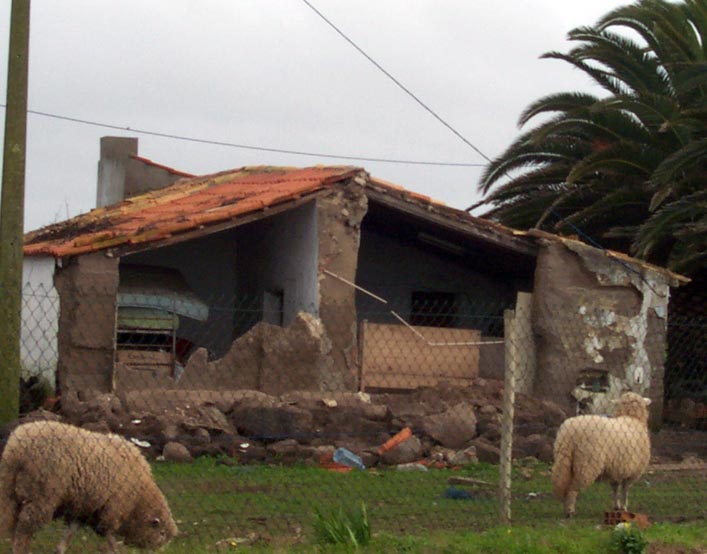
Buying an Aljezur farmhouse
Aljezur farmhouses for sale
Algarve west coast climate; the best weather in Europe?
Contact
Odeceixe beach
Control of the red palm weevil
Vicentina natural park wildlife
Heating options
The truth about coastal property
What is natural park Costa Vicentina?
Building and renovating in western Algarve
Portugal land scams
Fishing on the Vicentina coast
Western Algarve agriculture
AFPOP
Utilities in Portugal
Schools in Aljezur
Solar home heating plans
Taipa, adobe, or rammed earth constructions;
I've had a couple of really angry letters about this page, it seems some people are very emotional about this type of construction; and indeed, it's petty hard to find anything on the internet except praise for taipa construction. That's why I think this page is an important alternative viewpoint, and I stick by everything I wrote here.
They offer great natural heat and humidity buffers, and in the Algarve climate stay very comfortable inside.
Unless they fall down.
A new built one would have a steel reinforced concrete ring beam around the top, supported by steel and concrete columns. I've heard of such a thing, but it's pretty rare. I have seen one renovated with a ringbeam added; it still has it's old foundation though.
98% of taipa constructions are structurally mud. they can last a long time, but they simply are not safe in earthquakes, and Portugal is a seismically active area.
Houses here really should be properly engineered, with adequate foundation and ring beam to support the roof. No one knows when the next big earthquake will come, but when it does, I'd sure rather be in a properly engineered and built house.
One big positive, though; they offer good acoustic damping. They are quiet inside.
The more common brick construction isn't very good in that regard.
The Wikipedia article is very enthusiastic about it, but read it with a grain of salt.
In reality, they are very expensive to build here, as they're very labor intensive. Yes, you save a little on building material, but the walls are the cheapest part of a brick house.
Usually, taipa constructions here are old, predating the current building codes. Foundation unknown, no pillars, no ring beam.
Unless built on high ground, they have a lot of trouble with damp rising up the walls, wicking into the hydroscopic clay during the winter rains.
A wall on such a house just off the main road in Rogil keeps falling down. you can look right into the end room from the road as you drive by.
If you have another view on this, and you actually live [through the winter] in a taipa house, I'd be pleased to post it here.

Taipa house after a rainy winter in Portugal
For a more positive view of taipa construction in Portugal, visit; www.arquitecturasdeterra.blogspot.com